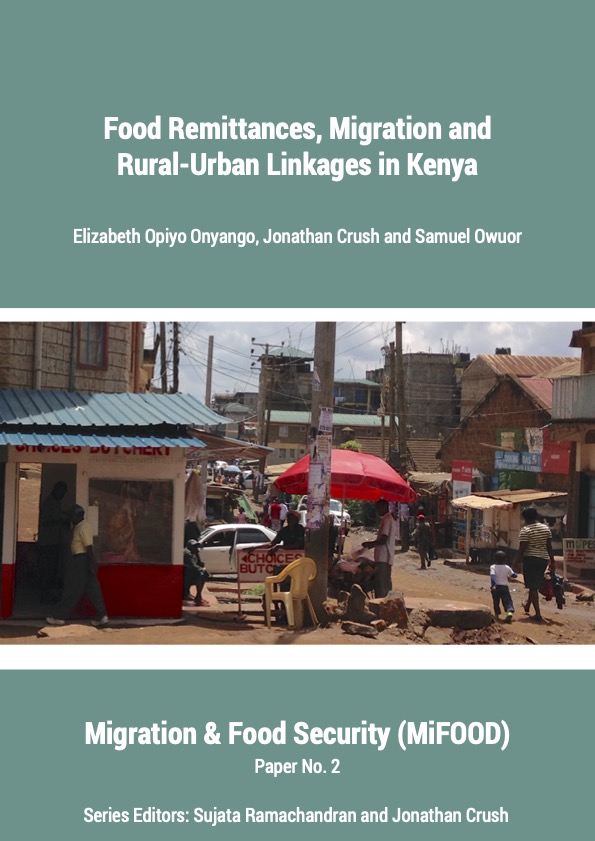Rural-urban migrants in Sub-Saharan Africa do not generally cut their links with rural homes and much has been written about the character, types and implications of connections between rural areas and rapidly growing cities. The persistence of circular migration and the perpetuation of rural-urban connectivity is a distinctive feature of Kenyan urbanization. Informal non-market food remitting from rural to urban areas has received little attention in comparison with cash remitting from city to countryside. This paper presents new evidence from a household survey in Nairobi on the extent, frequency and nature of informal food remitting from rural areas to migrants in the city. Around 70% of household heads in Nairobi were born in rural areas of the country, which facilitates comparison between migrant and non-migrant households as well as amongst different categories of migrant households (in terms of variables such as household size, type, income level, and food security). Approximately half of both migrant and non-migrant households in Nairobi send cash and receive food remittances, evidence of the perpetuation of rural-urban ties. To provide additional insights into rural-urban food remitting, the paper discusses the results of three multilevel adjusted regression models showing the associations between food transfers and various demographic and socioeconomic individual and household variables. The paper shows that contrary to expectations from the literature, food remittances are not solely related to migration, nor only associated with poverty and the struggle for urban survival. In addition, food remitting is clearly not a transitory, short-term phenomenon connecting urban households with rural homes.

